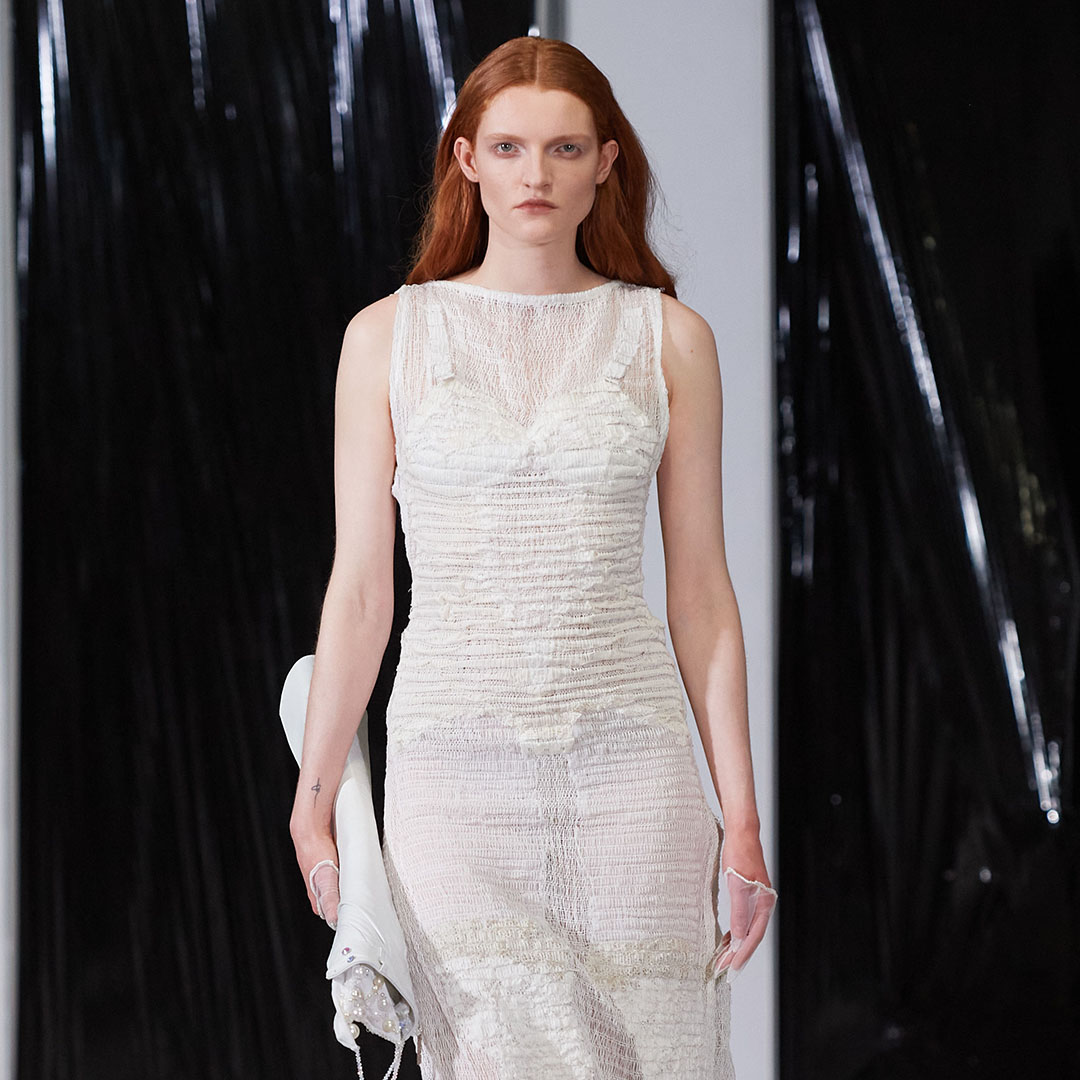This week marked the third edition of Berlin Fashion Week in its new form. With a heavy focus on sustainability and craftsmanship, Berlin’s free spirit is ubiquitous in practically every collection, with Namilia as the frontrunner of what Berlin’s underground stands for. Other brands take center stage regarding traditional craftsmanship, sustainability, and repurposing of materials and items. And the best thing, according to the fashion week’s designers: “In Berlin, I feel free to create whatever I want to. Other cities are more polished.” Cover image: courtesy of Berlin Fashion Week/Fashion Council Germany
BERLIN FASHION WEEK FALL/WINTER 2024
In the front row at Namilia, guests were thrilled by the show and fashion extravaganza. “I like that there are no rules. Take this show; everything is possible. The designers create a collection with an essential statement in mind: putting an end to homophobia and related violence. In a capital where being openly gay, trans, or anything related, hate towards the LGBTQIA+ community is striking. With the right-wing parties steadily growing, the collection’s timing couldn’t be more on point. “While being open-minded is one of the most essential characteristics of the fashion industry, traditional fashion weeks often don’t live up to it,” one of the guests continued post-show.
“WHILE BEING OPEN-MINDED IS ONE OF THE MOST ESSENTIAL CHARACTERISTICS OF THE FASHION INDUSTRY, TRADITIONAL FASHION WEEKS OFTEN DON’T LIVE UP TO IT”
Overheard at Namilia’s front-row
Dzhus’ performance was centered around a personal message from the designer. As always, Dzhus’ collection is about repurposing clothes, where tops become jackets and hats transform into bags. By doing so, the Ukrainian designer showcased how the boundaries between art and fashion blur. “Thematically, I revisited my comfort zone, referring to modernist comics and gnostic narratives, attributes of social conformism, and gender representation speculations. Sustainable sartorial techniques and textile manipulations pay homage to the craft of kintsugi as I shape my sculptural apparel from fragments of pre-owned headpieces and scarves,” Irina Dzhus explained. It’s a typical example of the German fashion week – designers tend to lean into personal stories, address societal issues, stand up for minorities, and focus on sustainability.
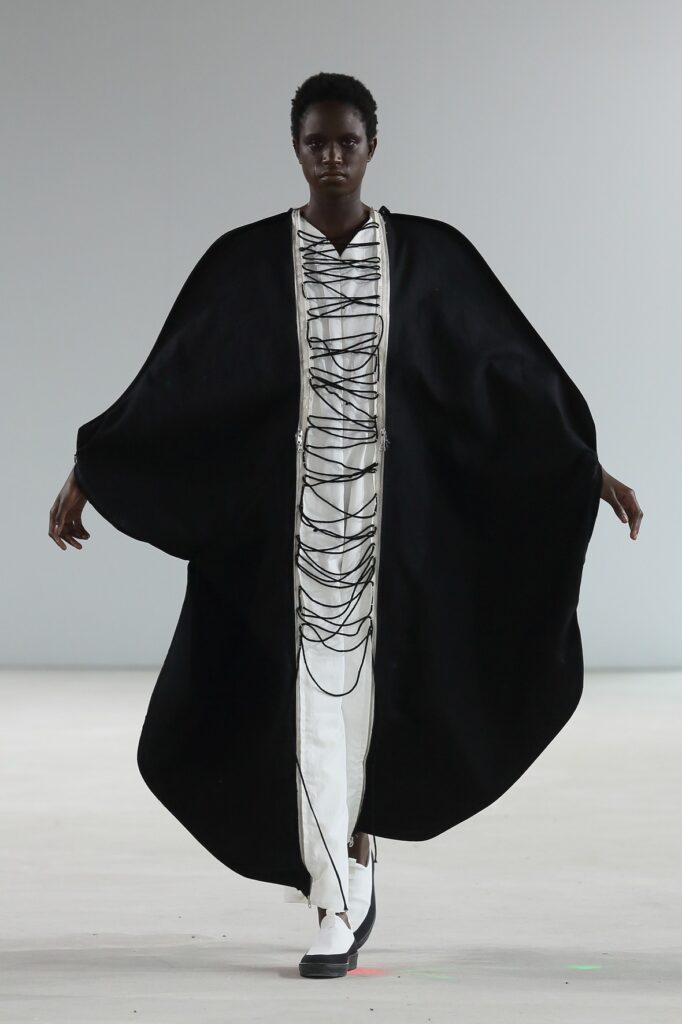
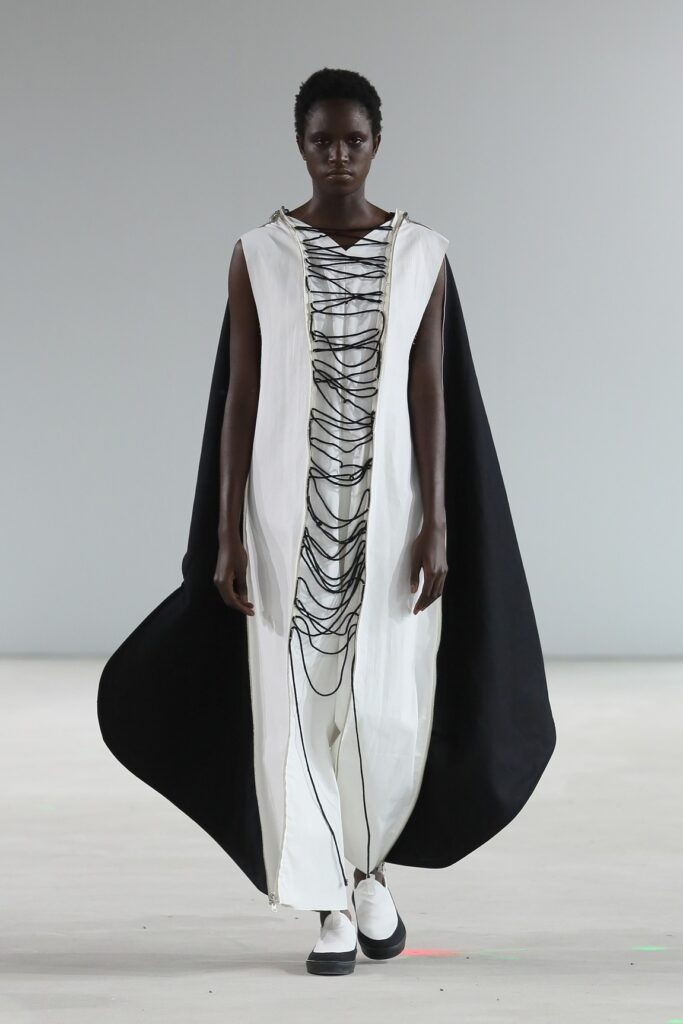
FOCUS ON CRAFTSMANSHIP
Ditching the rulebook of fashion doesn’t imply that there isn’t space for craftsmanship. On the contrary, many participating fashion houses stepped up their game regarding traditional crafts. Take Marke, for example, who based his collection on the people who have left a mark on his way of being. “It’s about my youth and how it shaped my look at life. This season, I wanted to delve deeper. I focused on the words people spoke to me that have become a talisman I carry.” His collection formed a mix of Bavarian influences mixed with classic French cuts. The four-year-old Avenir stands out for its commitment to doing good. Since starting in 2020, the label has been using recycled materials. Designer Sophie Claussen, who won the Berlin Contemporary award, explains nature is a significant source of inspiration. “The collection serves as a somewhat uncomfortable reminder that Earth’s temperatures are rising and our planet is distressed. It conveys a sense of discomfort and the urgency of environmental protection measures,” the designer explained post-show.
“OUR CURRENT COLLECTION CELEBRATES A DECADE OF CREATIVE WORK. WE’VE REVISITED OUR SIGNATURE PIECES AND REINTERPRETED THE DESIGNS AND PATTERNS FROM OUR DEBUT COLLECTION OF 2015.”
Jale Richert and Michele Beil, founders of Richert Beil
Richert Beil’s “Heritage” collection celebrated its 10th anniversary. “Our current collection celebrates a decade of creative work. We’ve revisited our signature pieces and reinterpreted the designs and patterns from our debut collection in 2015. The collection focuses on appreciating the traditional German fashion heritage and the style of our grandmothers. We deconstructed their wardrobe into conceptual pieces, subverting familiar silhouettes and styles with unconventional materials and design techniques. It featured a mix of precise tailoring, including modest yet sophisticated ensembles and suits, alongside deconstructed twin sets, cardigans, smocks, and other typical stylistics. Sentimental accessories such as pearls, heirloom necklaces, and brooches complemented the collection. Conceptually, the grandmother’s look represented a blend of personal style, comfort, and the influences of the eras she has lived through, creating a unique and endearing fashion statement that spoke to her life journey,” the designers shared with the German Fashion Council.
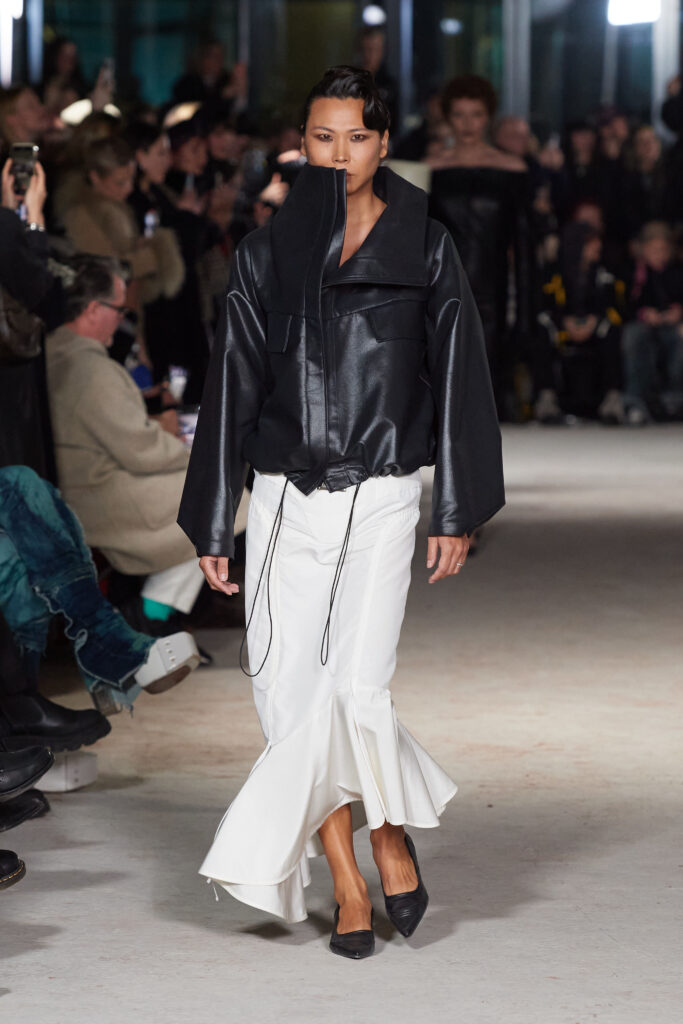
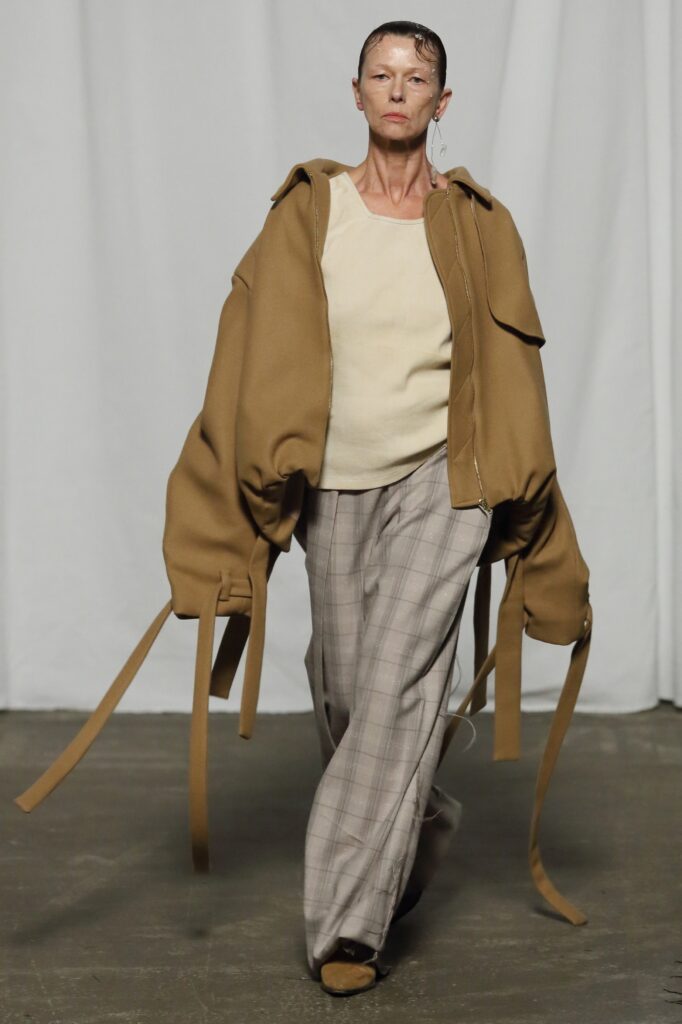
NEXT CHAPTER
Like Berlin Fashion Week itself, Berlin-based label Sia Arnika is visibly maturing. “The runway presentation during Berlin Fashion Week shows the next chapter of Sia Arnika. Each collection I create embraces duality, and this narrative revolves around contrasts like disarray and ornamentation, the mundane and the provocative, and the art of layering and shaping. To immerse the audience completely in the collection’s world, meticulous curation of light and sound will heighten the ambiance, transporting viewers deep into the realm we’ve meticulously crafted.” The fabric is at the heart of every creation – a tapestry of textures, shapes, and the artful deconstruction that sets the stage for a captivating narrative. Within these threads, the essence of the collection’s tale is woven, each strand contributing to its story.
“AS I’M GETTING OLDER, I FEEL MORE CENTERED. MY FALL/WINTER 2024 COLLECTION IS A REFLECTION OF THIS PERSONAL PROCESS.”
Sia Arnika, creative director of SIA ARNIKA
Gerrit Jacob, a new kid on the block, showed his eclectic collection on Monday. The upcoming talent became the first designer within the showcase format Intervention and inaugurated Berlin Fashion Week with his presentation. Delving into the thematic nuances of identity and self-actualization, Jacob’s creations unfurl a mesmerizing narrative, beckoning individuals to embark on a trip of personal revelation. From beginnings in Hamburg, Germany, Gerrit’s journey took flight when he ventured to London at 18 to pursue his passion for fashion at Central Saint Martins, where he attained his BA in Womenswear in 2016. Jacob honed his craft through invaluable experiences at renowned fashion houses like Balenciaga and Martine Rose. Yet, his thirst for knowledge and innovation led him back to Central Saint Martins in 2017, this time for his MA. Jacob’s talent got noticed when he unveiled his menswear collection at the prestigious CSM MA show in 2019. Inspired by themes of teenage disenchantment, his collection made waves with its thought-provoking concepts and avant-garde designs. After gaining experience at Gucci for two years, the designer returned to its roots, establishing his brand in Berlin in 2021.
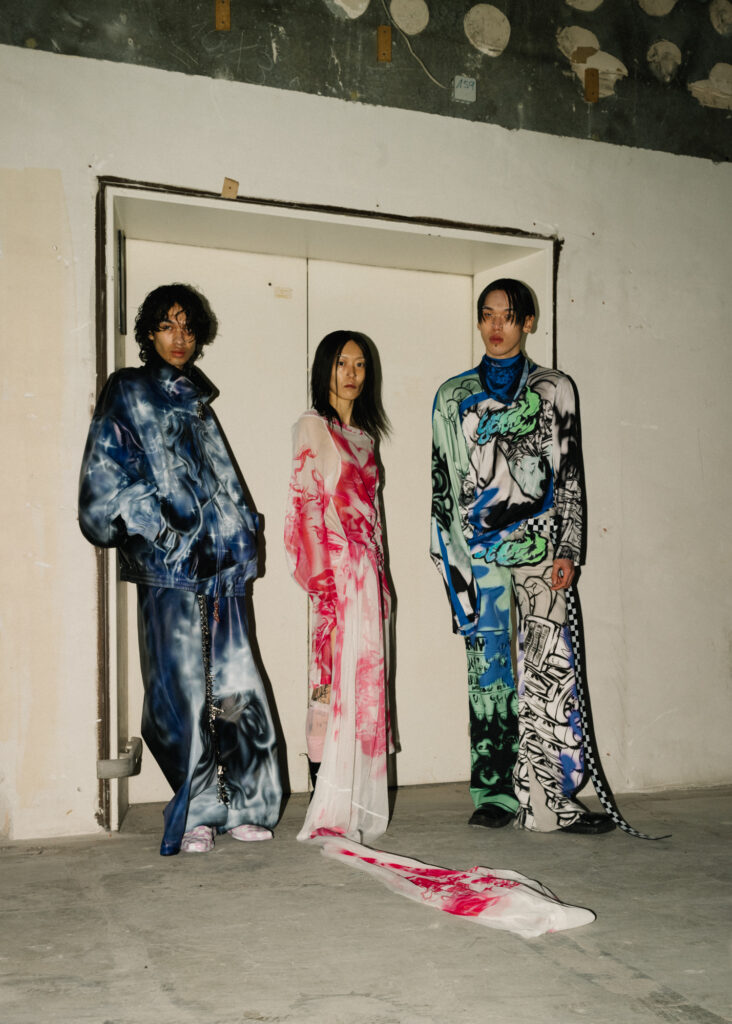
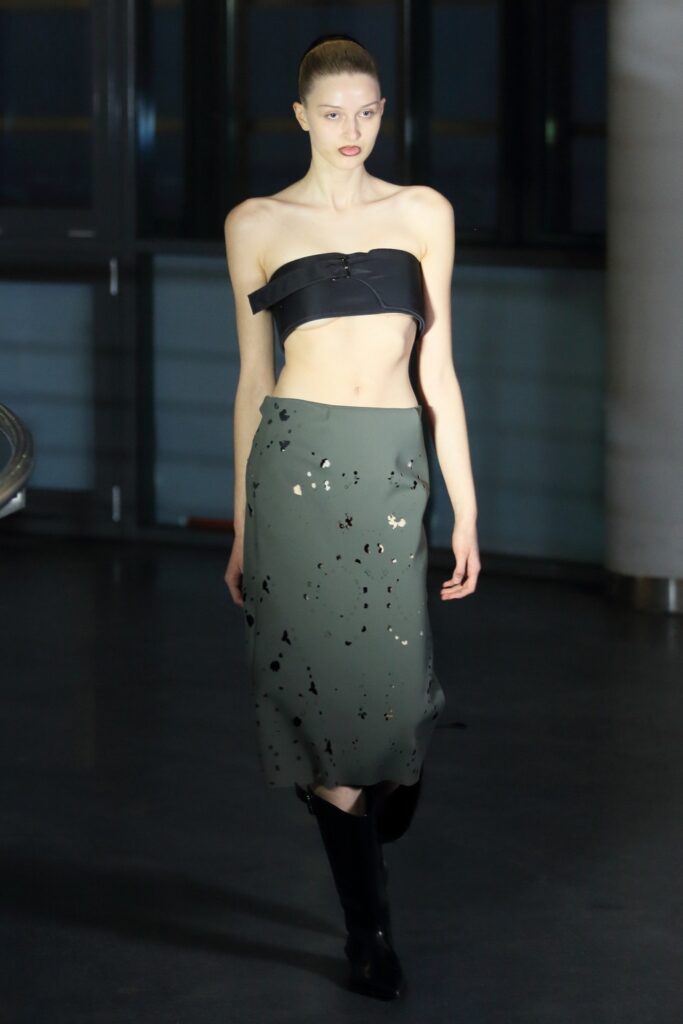
SUSTAINABLE AT HEART
In line with a sustainability and craftsmanship-heavy focus, the first steps towards collaborating with Copenhagen Fashion Week have been taken. With Cecilie Thorsmark – CPHFW’s CEO – as one of the more prominent front-row guests, Berlin Fashion Week hopes to implement Copenhagen’s sustainability requirements for participating designers soon. “We need to adapt to the current state of our fashion week and its participants,” a Berlin Fashion Week team member explained. “We can’t just demand emerging designers to stick to these requirements out of nowhere, but we would love to work towards these goals. After all, most participating designers are already on the right path.” Becoming an eminent player in the fashion industry takes time, too, but one thing is evident: Berlin Fashion Week will get there sooner rather than later.
Copenhagen Fashion Week: a reflection of economic downturn and TikTok’s office siren aesthetic

